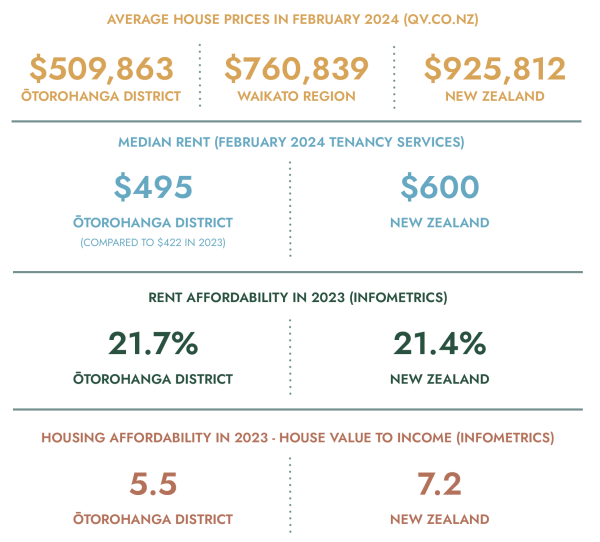Business support in Ōtorohanga District
Welcome to Ōtorohanga District, a great place for you and your business to thrive and flourish. Whether you aim to start or relocate your business, invest in one or more of the many opportunities that our district has to offer, advance your career, or enjoy a tranquil lifestyle, this is a great place to live and work.
Below you will find a detailed snapshot of our district from the Council’s Economic Wellbeing Strategy, and here are links to business support, economic data, and wellbeing organisations in our district:
- Elevate - the local economic development agency for Ōtorohanga District
- Infometrics - the regional economic profile for Ōtorohanga District
District Snapshot
Ōtorohanga District falls within the rohe of a number of iwi and hapū including – Maniapoto, Raukawa, Ngāti Hikairo, Ngāti Apakura, Ngāti Mahuta, Ngāti Te Wehi, Ngāti Uakau and Te Patupō, with at least 17 marae located in different parts of the district.
Ōtorohanga is a proud King Country district big on heart and space. A small population of 10,900 people call Ōtorohanga District home. The Ōtorohanga District covers 1,976km2, from the Kāwhia and Aotea Harbours on the west coast, to the mighty Waikato River in the east.
Our district includes the communities of Ōtorohanga township and Kāwhia and Aotea villages. One third of employment is delivered through the primary industries of agriculture, forestry and fishing.
Most people (70%) live in the rural areas outside Ōtorohanga township and the Kāwhia and Aotea villages. There are 10,900 residents across the district with possibly 1000 to 1500 more people living here in the next 20 years. The ethnicity of Ōtorohanga district is also changing.
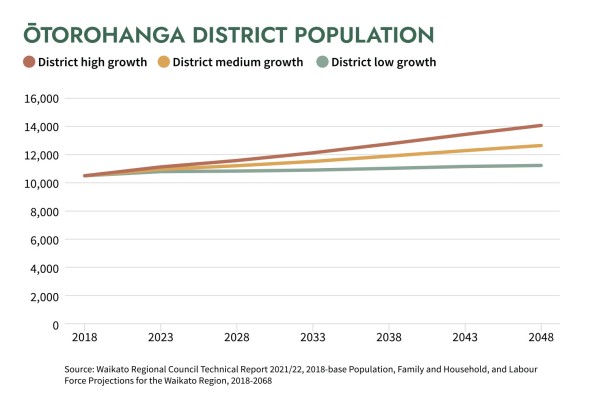

Māori economy

The Māori economy is a crucial contributor to Waikato region’s economy (there is no Māori Economy information available at a district level so this data is provided at a regional level) and is expected to play a major role in New Zealand’s financial future. While local data is limited, anecdotally it is thought Māori businesses have an important contribution to make to district growth and economic wellbeing.
Statistically, Māori are significantly impacted in terms of higher unemployment rates and lower incomes which can lead to poor housing and health outcomes. Māori school leavers in the region with NCEA level 2 or higher sit at 67%, which is below those of other secondary school leavers at 79%.

Employment and Earnings
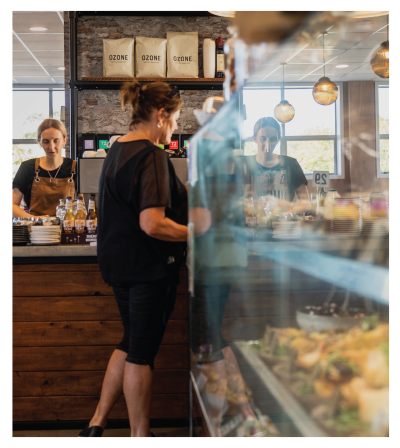
Unemployment in Ōtorohanga District was lower than the New Zealand average of 3.3% at 2.9% in 2023 although the number of 15–24-year-olds not in employment, education or training was 15.8%, which is higher than the New Zealand average of 11.2%.
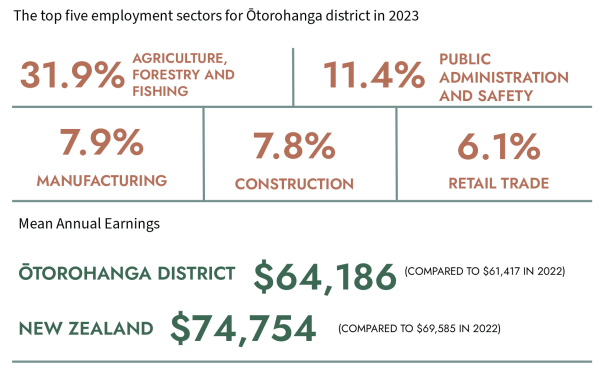
Tourism
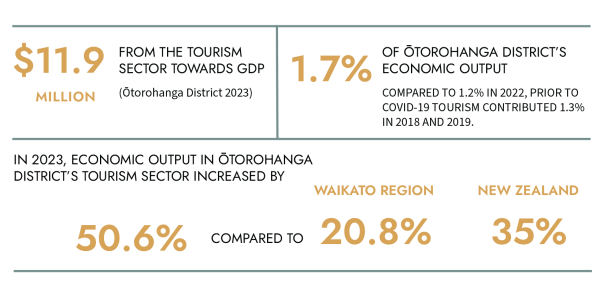
In the 12 months to October 2023 visitors spent $40 million across the district. Domestic visitors contributed $30 million of this whilst international visitors contributed $10 million. This was up 23% on the previous year and was also 10% more than 2019 pre-Covid. Visitors to the Waitomo Caves are still 14% down compared to 2019 pre-Covid levels, however, 2023 saw a 28% increase from the previous year.
Creative Sector
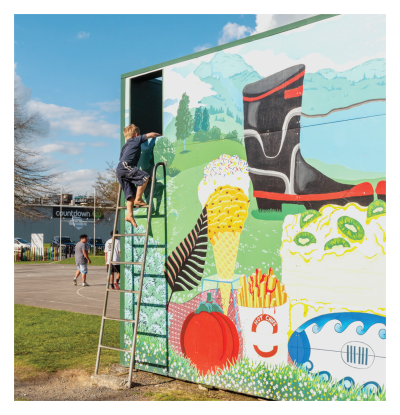
The Ōtorohanga Town Concept Plan identified the development of a Multi-Purpose Community Hub with a focus on enabling and platforming our arts and culture as a priority. Further work has defined this space as a hub to facilitate creative learning, host civic functions, showcase performing arts, support regular markets and future proof the delivery of a dedicated destination creative space.
The Creative Communities grant scheme is often oversubscribed, indicating an active creative sector. Over the last year we have been developing a stronger working relationship with Creative Waikato to improve the services to our local creatives.
By celebrating local creatives, we demonstrate Ōtorohanga District as a place where ‘things happen’, and where creatives can meet, share and thrive, further encouraging other creative people to move to the district. Increasing the visibility of Ngā Toi Māori and art of other locals will alter and shift the main street’s ‘energy’ as well as positively effecting the ways people can interact in the town centre.
Rangitahi / Youth
Ōtorohanga has one of the most youthful populations in the Waikato.
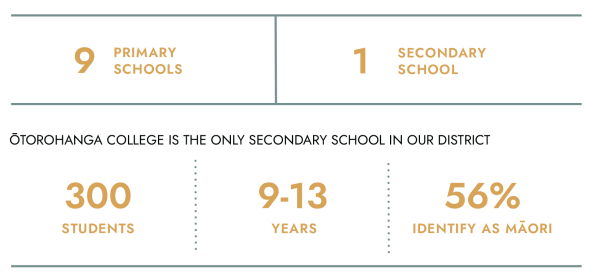
There are a number of very active local organisations who support youth, one of the things we heard is that there would be benefit in better networking between these agencies.
Education
While we perform well against the rest of New Zealand across Level 1 – Level 5 certificate levels, our higher education levels are significantly lower than New Zealand levels.
Over time this is improving across most education qualification levels. Te Pūkenga / Wintec offer a regional campus for tertiary studies in Ōtorohanga town. At present this campus is not busy.
Gross Domestic Product (GDP)

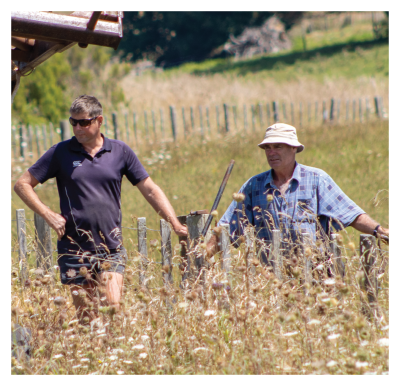
Although an industry may be growing rapidly, if it is small relative to a region’s total economy its contribution to overall GDP growth may also be small. This section therefore investigates which broad industries made the largest contribution to the overall growth of Ōtorohanga District’s economy taking into account their relative sizes.
- Agriculture, Forestry and Fishing made the largest contribution to overall growth in Ōtorohanga District between 2022 and 2023. The industry grew by 4.8% over the year and contributed 1.70 percentage points to the district’s total growth of 4.2%.
- The next largest contributor was health care and social assistance (0.46 percentage points) followed by rental, hiring and real estate services (0.44 percentage points).
- The largest detractor from growth over the year was Education and Training which declined by 10.1% and contributed -0.24 percentage points to the total growth of 4.2%. Manufacturing (-0.15 percentage points) was the next largest detractor.
Data source: Infometrics 2023
